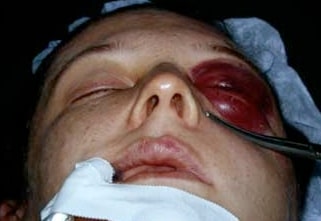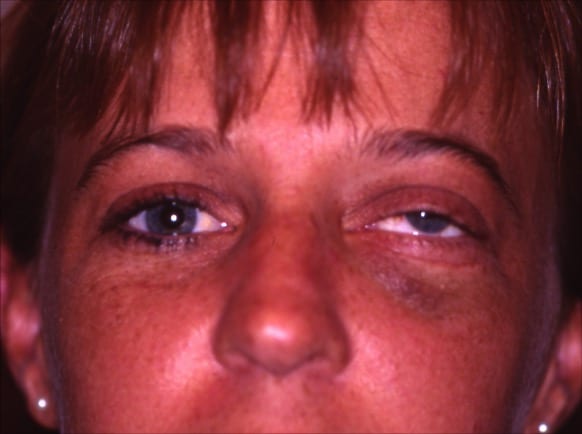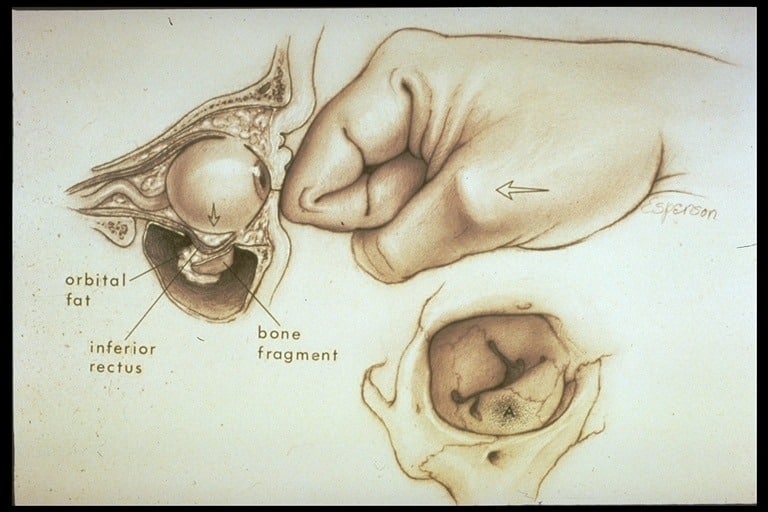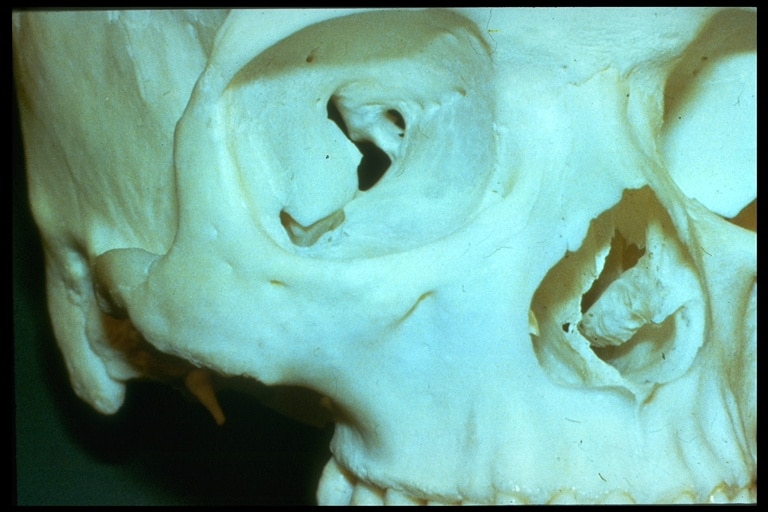Orbital Fractures
What is an Orbital Fracture?
Trauma to the face can often result in broken bones around the eye socket, also known as the orbit. While the cheekbone and forehead are both quite strong, many of the bones around the eye are delicate and fragile.
Some anatomists believe that the delicate orbital bones act like the “crumple zone” built into automobiles to protect the passengers. When the orbital bones break and absorb the impact, the eyeball itself is safeguarded.
This type of orbital fracture is called a “blow-out” fracture. In any case, many kinds of trauma can cause orbital fractures. These can include being hit in the upper face with a baseball, tennis ball, steering wheel, or fist, or falling and striking the face on furniture, stairs, trampolines, or many other objects.
Symptoms of an Orbital Fracture
Orbital fractures can be painful or relatively painless; in fact, numbness is one of the most common symptoms, particularly in the cheek, upper lip, nose, and upper teeth. Orbital fractures are also frequently accompanied by bruising and swelling: a “black eye” or a “shiner”. Of course, bruising and swelling can also occur from more minor injuries to the eye area. Interestingly, in children, the orbital bones can break without much bruising and instead the child may have nausea and weakness that indicate a more serious and urgent problem.
Double vision is another common symptom, either all the time or only when looking in certain directions (most commonly up). This occurs when the eye muscles get stuck or “entrapped” in the broken bone. The blurring of vision is usually mild when only the orbital bones are broken and the eye itself is OK. Finally, orbital fractures that are severe enough to also involve the neighboring cheekbone can cause difficulty opening the mouth, chewing, and speaking.
Types of Eye Socket Fractures
The most common orbital fractures occur where the bone is most delicate: at the floor and the inner (medial) wall. Fractures of the outer (lateral) wall are less common and more likely to involve the cheekbone. These are also known as tripod fractures or zygomaticomaxillary complex (ZMC) fractures. Although most people who have an orbital fracture will be evaluated and treated soon after the trauma, occasionally we will see people with fractures that are years old. If needed, surgery is still often possible even years later.
Diagnosing Fractures to the Orbit
Orbital fractures can often be diagnosed during a meticulous examination by an eye doctor or an emergency room physician. Other serious eye injuries can be present at the same time, including bleeding or inflammation inside the eyeball itself, or even rupture or laceration of the eyeball, and so a careful examination is very important. A CT or CAT scan will almost always be performed to show exactly where the fracture(s) are and to help decide what to do next.
What People Say About Us!
"Dr. Robert Fante is not only an extremely skilled and competent surgeon, but a compassionate and caring physician. His entire staff, as well, is friendly and efficient. If the waiting time can be a little long on some days, chalk it up to his popularity. His reputation is well deserved."
Click here to read more reviews.
Will Surgery Be Needed for an Orbital Fracture?
Not every orbital fracture requires repair. In fact, small areas of broken bone that haven’t moved much from their original location may not even have any symptoms. Numbness and bruising usually get better with time on their own, and surgery usually doesn’t help. Instead, as mentioned above, the main reasons for surgical repair are persistent double vision, and/or risk of permanent deformity with larger fractures.

The CT scan is usually very helpful in predicting who will need surgery, but sometimes physicians will watch patients over a few weeks to see what happens before deciding on a plan for surgical repair. Current research has even shown that double vision may only be temporary for some fractures so that it may sometimes make sense for the doctor to wait one or two weeks to see if surgery will be needed.
Orbital Fracture Treatment Options
The best treatment for some small fractures will be oral antibiotics (to prevent infection). We will give instructions to avoid blowing the nose (since the orbit is right next to the nose and sinuses, so that air can be forced into the eye socket) followed by time to heal. Other larger fractures will need surgery to prevent permanent problems with double vision or “sinking” of the eye into the socket or cheek sinus that would cause obvious deformity.
Regular surgery is usually an elective, outpatient procedure in the first few weeks after the injury. Surgeons often prefer to wait a week or two to let the swelling subside and treat any other eye injuries. Orbital fracture repair is almost always performed under general anesthesia, which means that the person is completely asleep.
Most often, fractures can be repaired using hidden incisions behind the lower eyelid or in the corners of the eyes. Depending on the size and location of the fractures, custom plastic or titanium sheets, plates, or screws might be necessary. These are typically permanent. If stitches are needed, they are usually absorbable and don’t have to be removed. Our team has successfully performed thousands of orbital fracture surgeries.
Orbital Fracture Emergency
Rarely, and almost exclusively in children, orbital fractures can be an emergency. Since the bones of children can be springier than adults, sometimes they can break and then snap back into position. When this happens to the orbit, the eye muscle(s) can be badly entrapped or stuck in the broken bone. As a result, the muscles can then die within a few hours. This type of “trapdoor fracture” is common with kids who have nausea or vomiting, have almost no bruising, but who have one eye that can’t look up. Emergency repair should be performed as soon as possible.
3d Orbital Reconstruction - Before & After
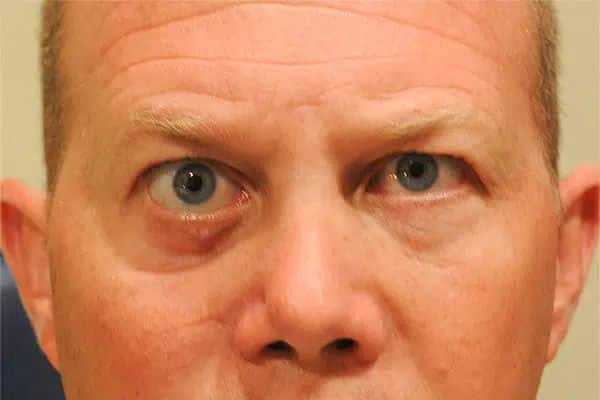
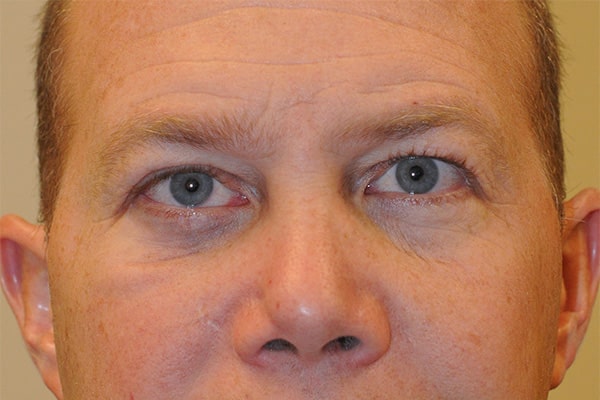
Recovery From Orbital Fracture Repair Surgery
After surgery, the surgeon or nurses might check eyesight in the recovery room before the patient can go home. Usually, there is no need for an eye patch or bandage. The bruising (and sometimes the numbness) is temporarily worse for a week or so and ice packs can help for the first 36 hours. Pain medication, oral antibiotics, and/or antibiotic eye drops may be necessary. Most people are able to return to work or school within a few days or a week.
Schedule a Consultation
Orbital fractures are a common part of facial trauma from sports, motor vehicle accidents, and falls around the home. Prompt evaluation and CT scan are important, but fortunately, not everyone needs surgical repair. If you would like more information on orbital fractures, contact our Denver, CO office today! Call 303-839-1616 to schedule a consultation with our Board-Certified Surgeons Dr. Fante, Dr. Echalier, and Dr. Levitt.

